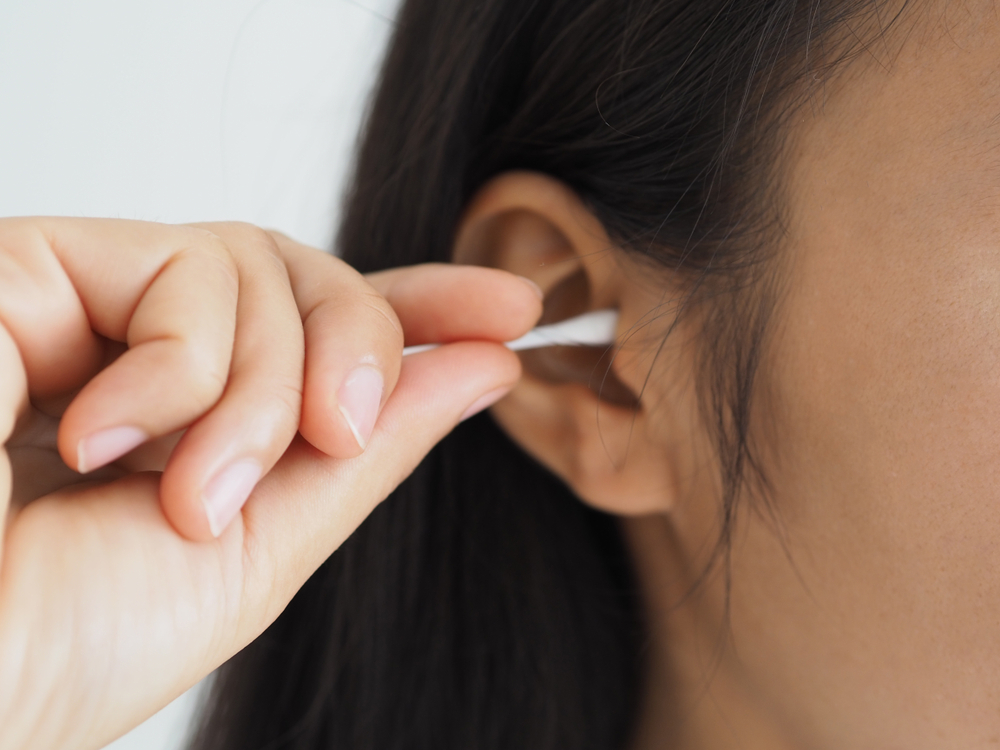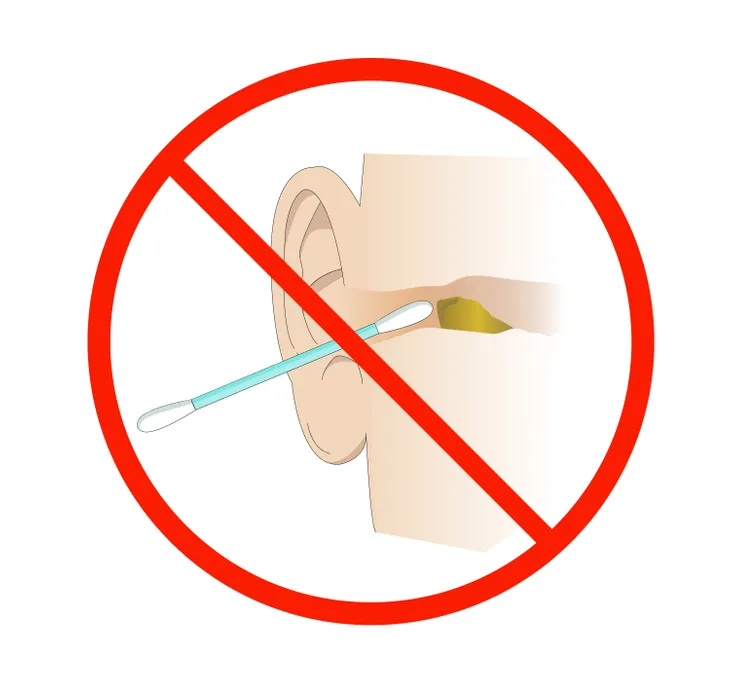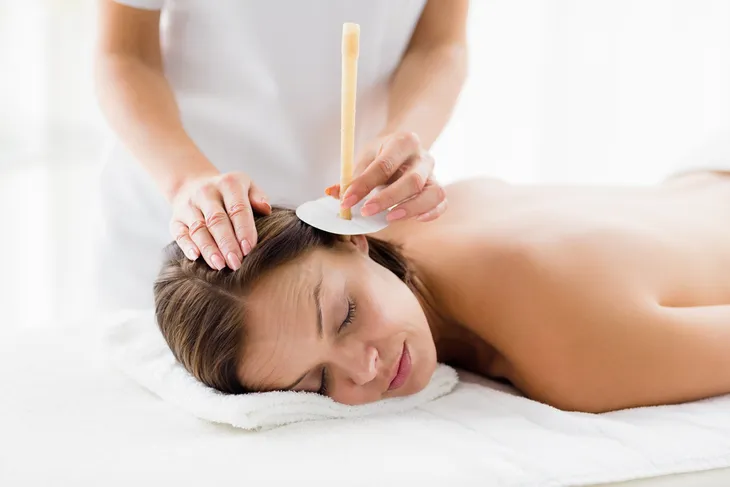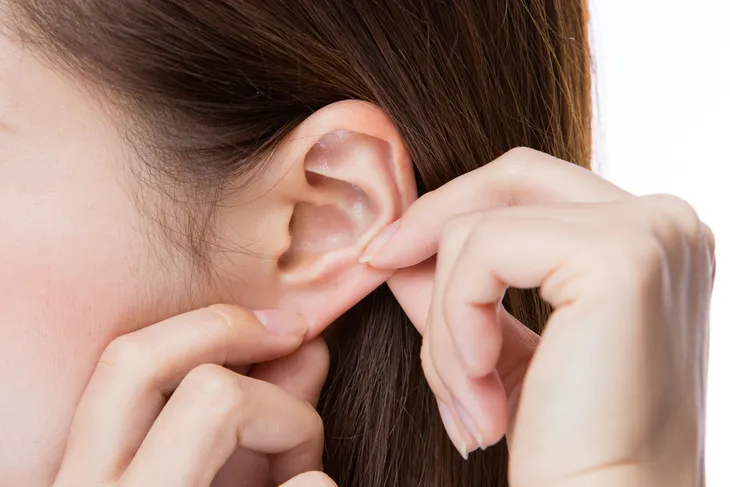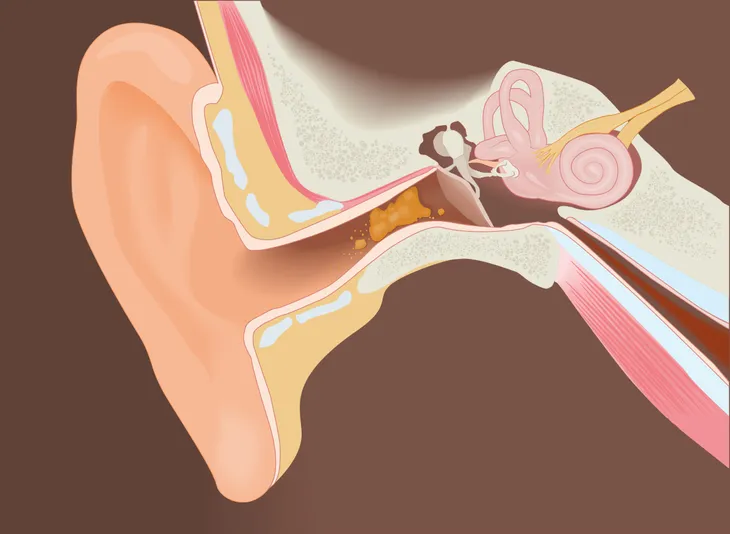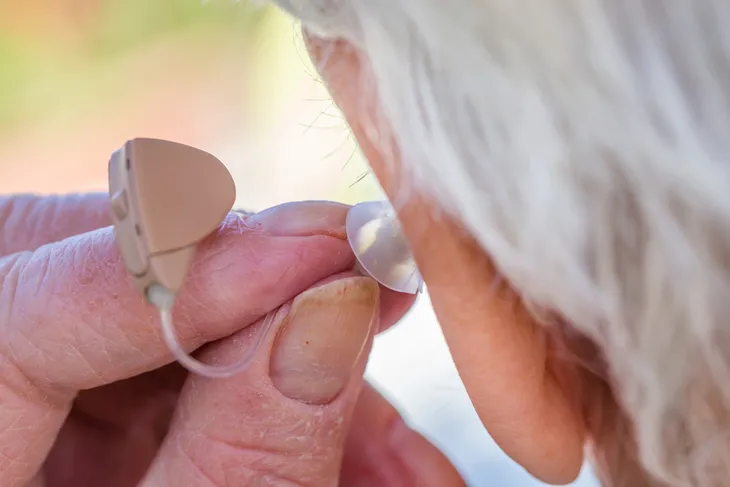Something you might not think twice about using is a Q-Tip to clean your ears. According to research published in the British Journal of General Practice, around 68-percent of people use cotton swabs to remove earwax. Around 76-percent of those people admit to doing it at least weekly. But it turns out, this actually isn’t the best habit to have in our hygiene routine.
So, what’s the harm in using Q-Tips to give our ears a proper cleaning? Here’s a rundown of how you could be doing your ears more harm than good when using cotton swabs.
Why Do We Have Earwax?
Before we dive into the Q-Tip controversy, let’s review why humans have earwax in the first place. The proper term for it is cerumen and it’s actually meant to protect the ears with its lubricating and antibacterial properties.
Cleveland Clinic says that earwax is produced by the outer part of the ear canal and is made up of dead skin cells and hair discharged from two different glands. Old earwax eventually just flakes off through everyday motions like chewing or talking. But earwax can also build-up, which is what can prompt people to stick a Q-Tip in their ear to remove it.
What’s Wrong With Using Q-Tips?
As convenient as they are, Q-Tips can put your ear health at serious risk. Healthline says that using a cotton swab to clear wax can actually end up pushing the wax further inside your ear.
When you push earwax deeper into the ear, it prevents your ears from naturally clearing. This is called earwax impaction which can lead to symptoms like pain, muffled hearing, and a feeling of fullness in the ear.
Potential Injuries
Your ears are sensitive and can be badly injured when misusing a cotton swab. Healthline explains how one of the most common ear-related injuries is a ruptured eardrum. One study shows how this penetrating injury was the cause in 44-percent of reviewed ruptured eardrum cases.
Verywell Health says the ear has some of the tiniest bones in the human body right underneath the eardrum. If those are pressed, it can send vibration waves to the inner ear and cause issues with hearing and balance.
More Dangers
Some people who use cotton swabs can potentially get part of it, or the entire thing, stuck in the ear. Healthline says this is actually one of the most common foreign objects stuck in the ear that brings adults to the emergency room. It’s also incredibly uncomfortable or painful and can also cause hearing loss.
On top of all this, there is an added risk of developing an infection if too much wax and bacteria are pushed far into the ear.
Other Harmful Methods
Another dangerous method some people do to remove earwax is called ear candling. This is when you place a lit, hollow, cone-shaped candle into the ear canal.
Mayo Clinic says this technique is not safe and can lead to serious injuries. Not only is this method dangerous, but research also shows that it’s not an effective way to remove earwax or treat other conditions.
The Risks of Ear Candling
Similar to Q-Tips, ear candling can push wax deeper into the ear canal and lead to other problems such as:
- Deposits of candle wax in the ear canal
- Burns to the face, ear canal, eardrum, and other areas
- Puncture of the eardrum
How to Clean Your Ears
If you’re looking for a safer way to clean your ears, there are safer alternatives to using cotton swabs or candling. Keep in mind that you should see a doctor if you’re dealing with a blockage before attempting to fix it yourself.
One easy method is to use a damp cloth or paper towel with lukewarm water. Medical News Today says to wring out the excess and gently use the cloth to clean the ear. Do not insert the cloth into your ear. Instead, focus on the outer areas.
Irrigation
Some people may successfully clean out their ears using irrigation. There are kits available to purchase that involve using a syringe, water, or saline solution. Medical News Today explains how the user can apply the drops into their ear, one at a time, and let it sit in the ear for 15 to 30-minutes.
It’s important to follow the directions carefully before attempting to do this method. Keep in mind this isn’t something everyone should attempt. Don’t do irrigation if you have:
- Holes in the eardrum
- Diabetes
- Eczema or other skin conditions in or near the ear
- A Weakened immune system
- A tube in the eardrum
Symptoms of Earwax Blockage
Experiencing earwax blockages is relatively common and can happen to anyone. Cleveland Clinic reports that earwax buildup can be present in about 10-percent of children and 5-percent of adults in good health. Typical symptoms related to earwax blockages include:
- A feeling of fullness in the ear
- Pain
- Difficulty hearing
- Ringing in the ear
- Itchiness in the ear
- Discharge or odor coming from the ear
- Dizziness
Risk Factors
Some people may be more likely to develop an earwax blockage than others. They could have narrow or hairy ear canals or may tend to produce more earwax than the average person. Better Health Channel also notes that people working in dusty or dirty environments could see a buildup in earwax.
Cleveland Clinic says buildup is more likely to occur in:
- Older people
- People who use hearing aids, earplugs, or earbuds
- People with developmental disabilities
- People with ear canals shaped in such a way as to interfere with natural wax removal
When to See a Doctor
If you’re experiencing persistent symptoms related to ear pain or hearing loss, then it might be time to see your doctor. It could be related to earwax impaction that is too dangerous to remove on your own. Medical News Today says doctors may use a suction device, spoon-like tool, or forceps to remove excessive earwax.
Before reaching for the Q-Tips, schedule a doctor’s appointment. Attempting to remove the wax on your own could result in unwanted injury or infection. The doctor can remove earwax safely and effectively, as well as give you advice on how to prevent a blockage from happening again.
Practical Ways to Use a Q-Tip
So, what can you use a Q-Tip for if not to clean your ears? It turns out cotton swabs have plenty of other purposes. Some ideas to utilize a Q-Tip that doesn’t put your ear health at risk include:
- Fixing make-up mistakes
- Cleaning up your nails
- Clean electronics, car interior, and hairdryer lint
- Shine jewelry
- Scooping from products to keep them sanitary
- Applying facial products
